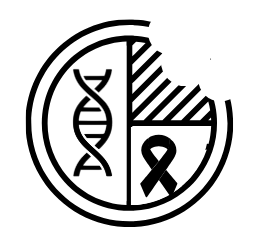Reading time: 4 minutes
Mia Hubert
Radiation therapy has been a critical tool in the battle against cancer. Following the discovery of X-rays and their cytotoxic potential, radiation therapy was quickly employed to treat skin and breast cancers in the early 20th century1. Today, radiation therapy is effective in controlling or even curing various types of cancers, often in conjunction with surgery, chemotherapy, or immunotherapy2,3.
Radiation therapy utilizes high-energy X-rays or gamma rays, which permeate tissues and interact with cellular DNA. This energy can disrupt DNA structure, leading to breaks within DNA strands. Radiation can also indirectly cause DNA damage by creating highly reactive chemical species, known as free radicals. Free radicals possess unpaired electrons, and thus scavenge the cell to donate or accept electrons from other biological molecules—such as DNA—to become stable. By interacting with DNA, free radicals can cause mutations or strand breaks. The cell responds to this damage by attempting to repair its DNA: failure to do so in the face of overwhelming DNA damage results in cancer cell death.
A robust radiotherapy response leading to cell death, however, requires something that tumor cells often have little of: oxygen4. When solid tumors rapidly proliferate, new blood vessel formation (angiogenesis) struggles to keep up. This results in poorly vascularized tumors, leading to a lack of oxygen in these cancer cells, known as hypoxia. Ample oxygen is required for the formation of reactive oxygen species (ROS), a common free radical induced by radiation therapy. Thus, in hypoxic tumor cells, the efficacy of radiation therapy is reduced.
Hypoxia also contributes to radioresistance through the upregulation of hypoxia-inducible proteins (HIFs). HIFs are transcription factors expressed under low oxygen levels that can upregulate hundreds of genes, including those involved in DNA damage responses, angiogenesis, and cell survival5. As a result, both the lack of oxygen and HIF activity can promote radiation therapy resistance, ultimately leading to poor clinical outcomes in patients4.
Consequently, in recent years, overcoming hypoxia-associated radioresistance has gained significant interest in oncological research communities. In 2023, this has been approached in various ways. For instance, researchers in Philadelphia aimed to improve radiation therapy response by increasing oxygen delivery to tumor cells6. This was done by administering oxygen-rich microbubbles to head and neck cancer cells in mice prior to radiation therapy. Microbubble treatment increased tumor oxygen levels and improved tumor response to radiotherapy, increasing survival rates.
Contarily, a Canadian group at McMaster University aimed to improve radiotherapy in non-small cell lung cancer by disrupting HIF signaling7. They found that canagliflozin, a diabetes drug, improved radiotherapy response partly by decreasing HIF1α levels. These results add to the growing repertoire of HIF-suppressive drugs that have been shown to be effective in combination therapies, particularly with radiotherapy. Furthermore, the approach of repurposing a diabetes drug to target cancer stands out as a cost- and time-efficient strategy, given the tedious development process for novel cancer treatments.
While it is decidedly useful to address the underlying causes of hypoxia-associated radiotherapy resistance, some research groups are taking a proactive approach. A group in the United Kingdom published a study exploring the use of oxygen-enhanced magnetic resonance imaging (OE-MRI) to non-invasively assess tumor oxygen levels8. They previously demonstrated this approach in mouse, rat, and rabbit models. This study successfully translated this concept to human patients with head and neck cancer. OE-MRI can guide physicians in choosing the right radiotherapy approach based on tumor oxygen levels.
In summary, following the discovery of X-rays, radiation therapy was quickly adopted to kill cancerous cells. Even in the modern era of cancer treatments, radiotherapy has proven to be a crucial anti-cancer tool, especially in combination with newer, targeted therapies. However, the intricate interplay between tumor oxygenation and radiotherapy efficacy highlights the challenges faced in this field. Recent endeavors have focused on directly relieving tumor hypoxia, impairing resistance-associated hypoxic signaling pathways, or monitoring tumor oxygenation to make informed clinical decisions. By attempting to address radiotherapy resistance, researchers and clinicians are working towards developing more effective and targeted cancer therapies that will ultimately improve patient prognoses and outcomes.
Edited by Shan Grewal
Photo by Jo McNamara: https://www.pexels.com/photo/a-room-with-radiotherapy-for-cancer-treatment-11288661/
References


Leave a comment